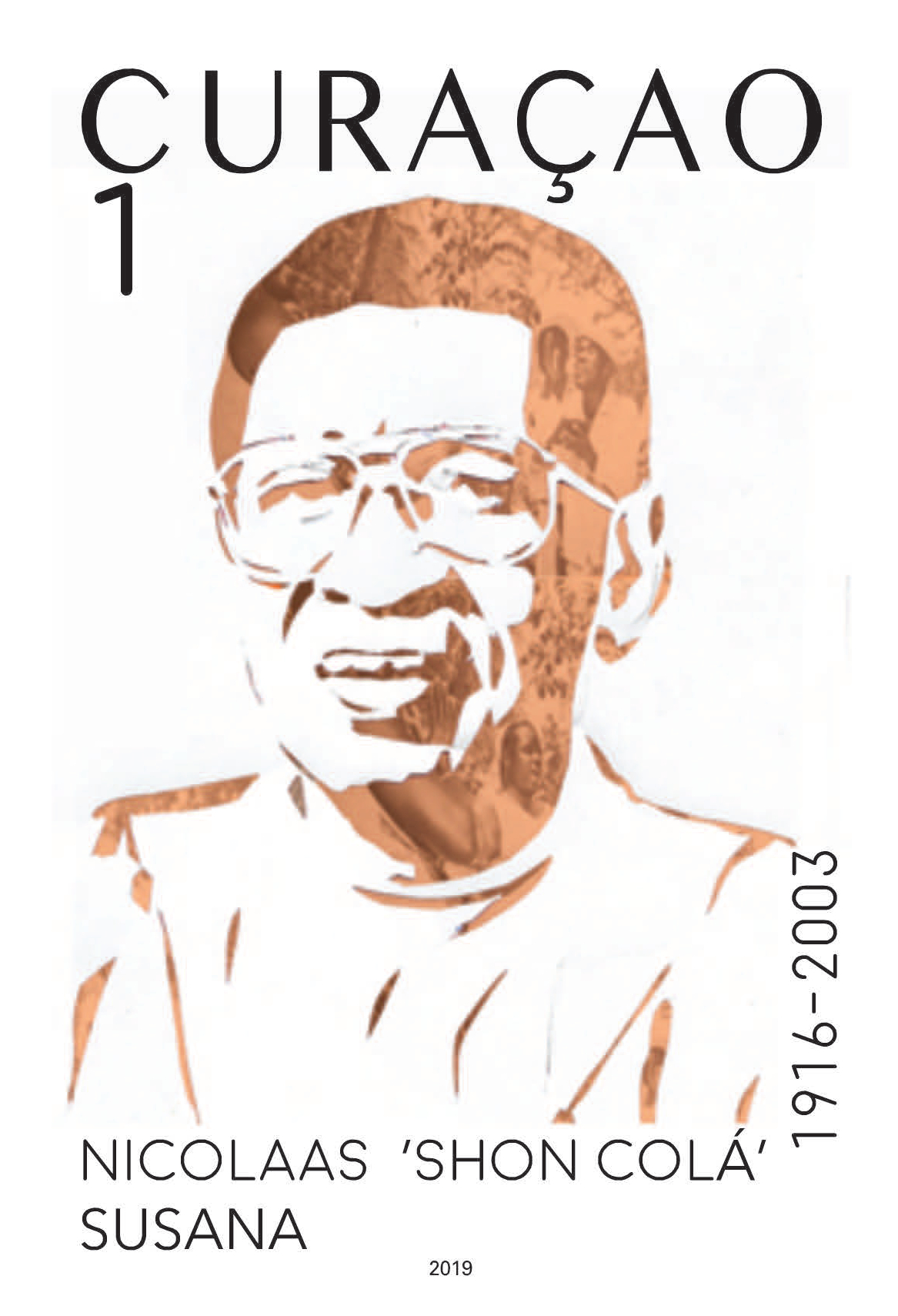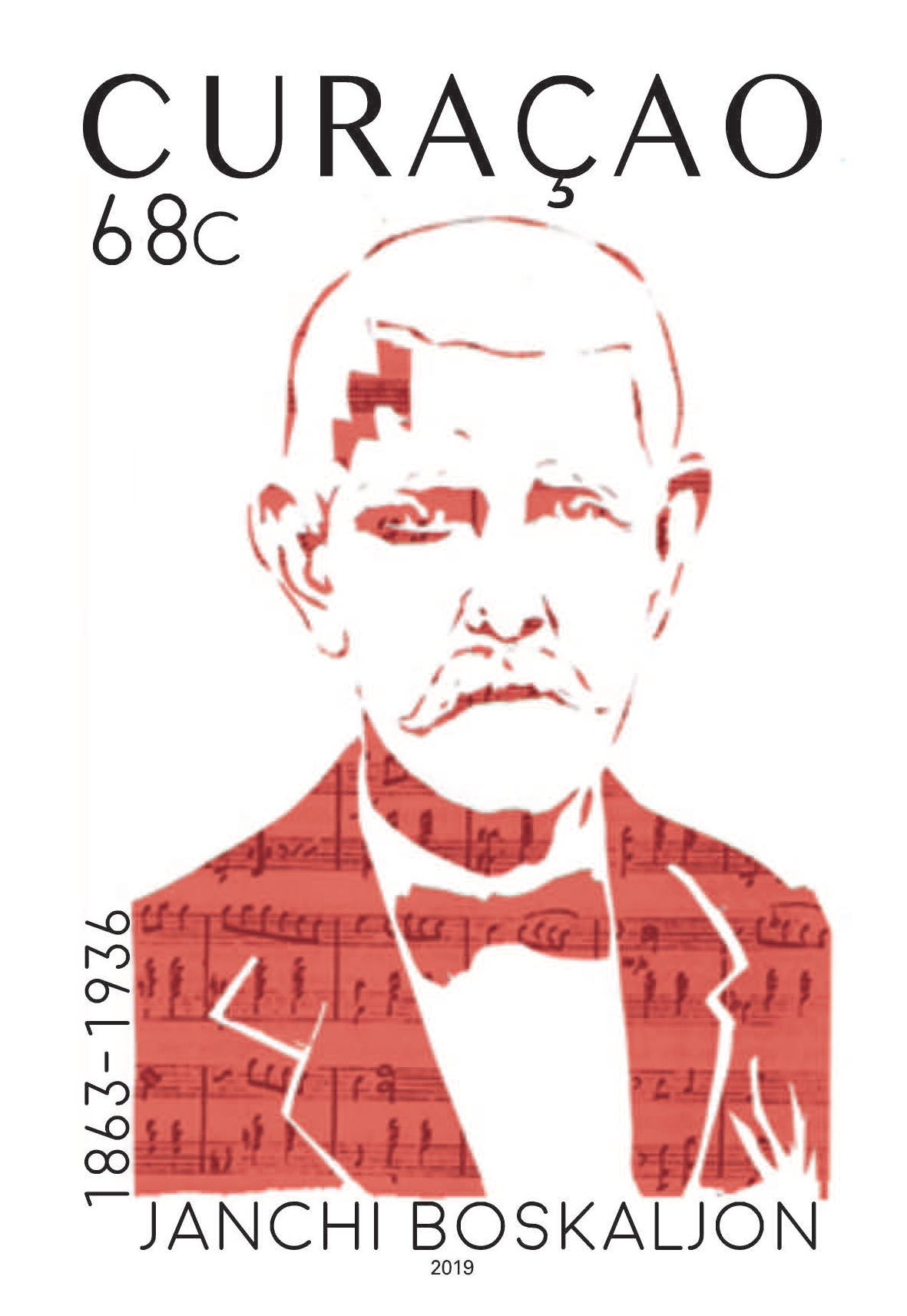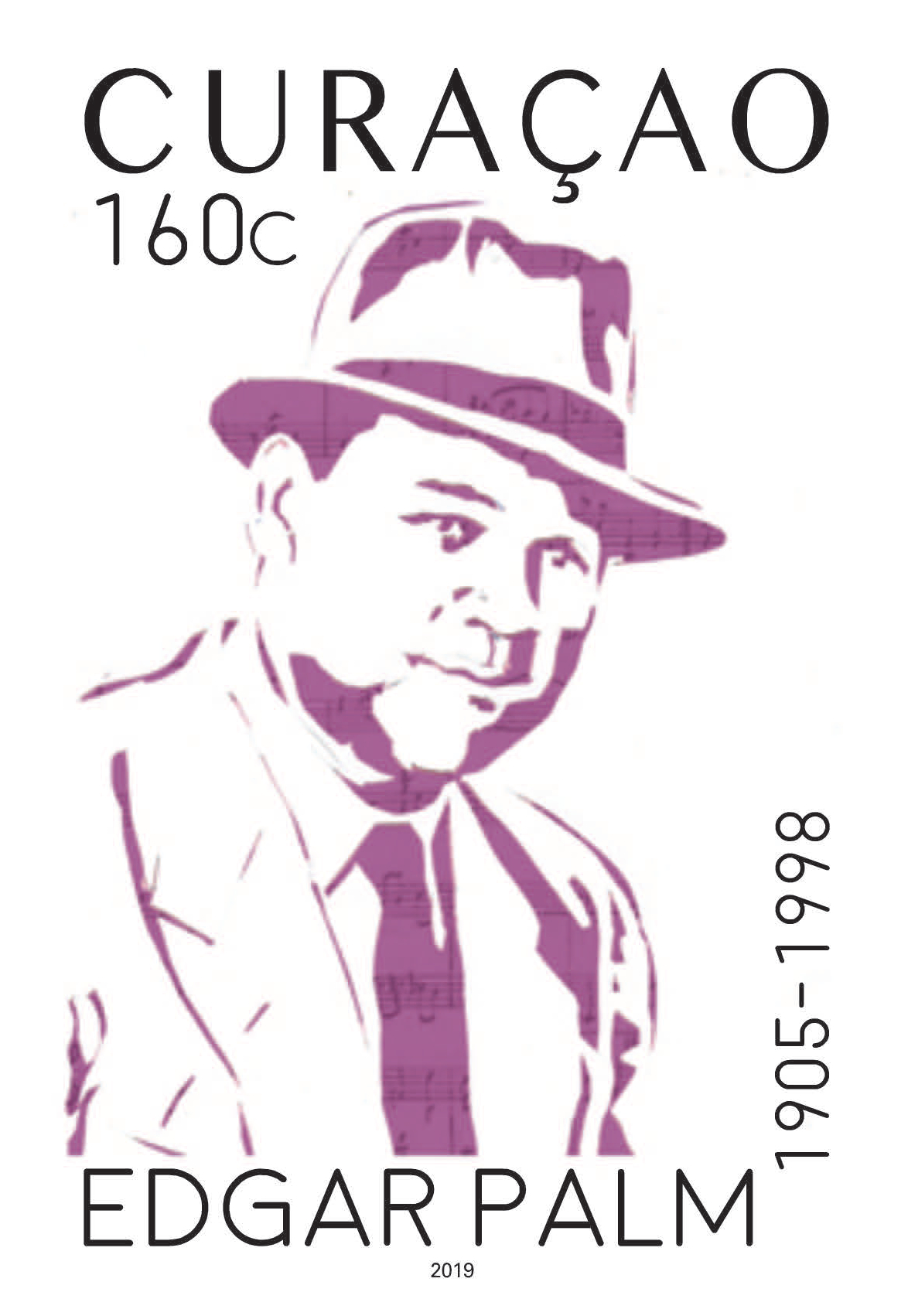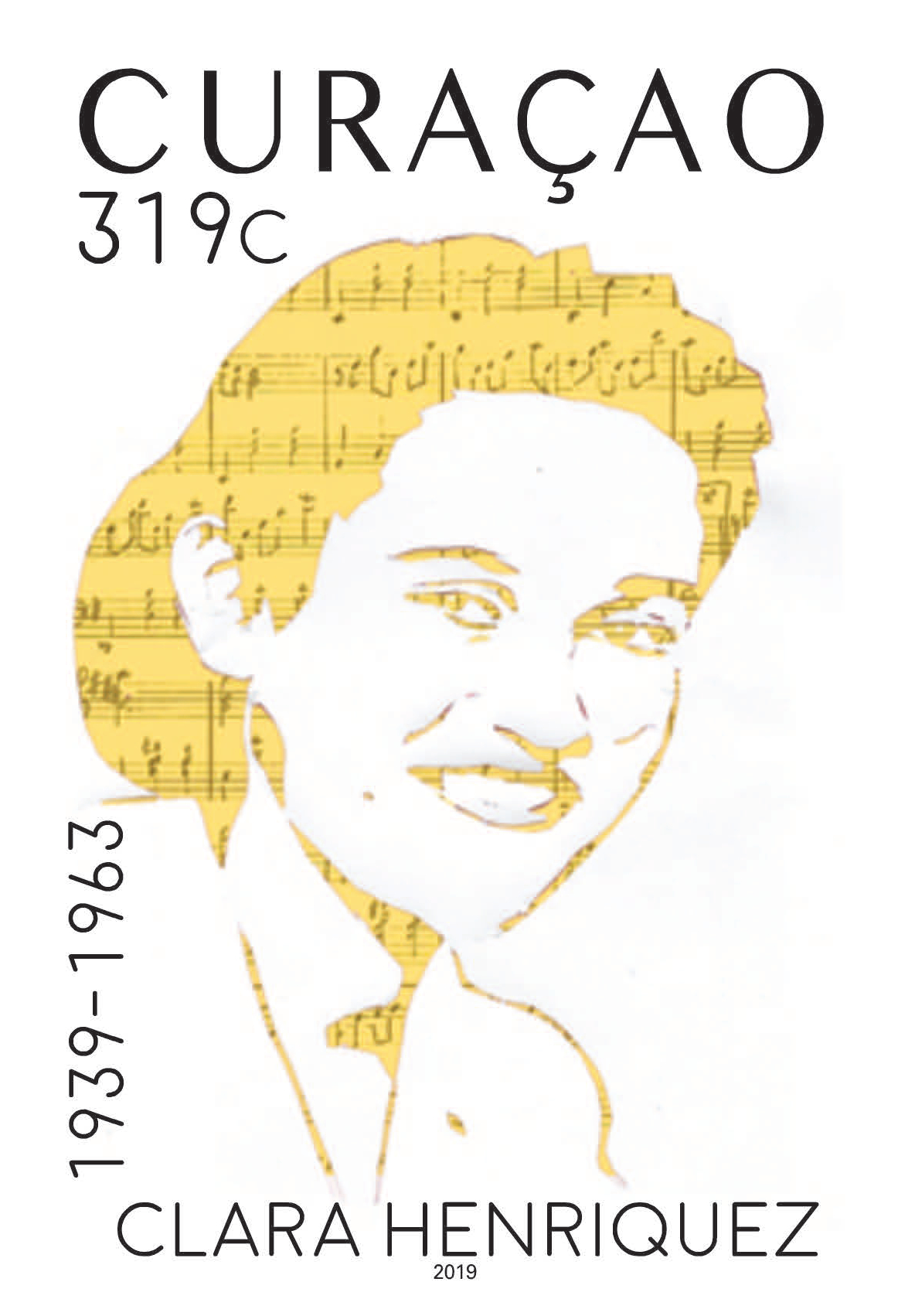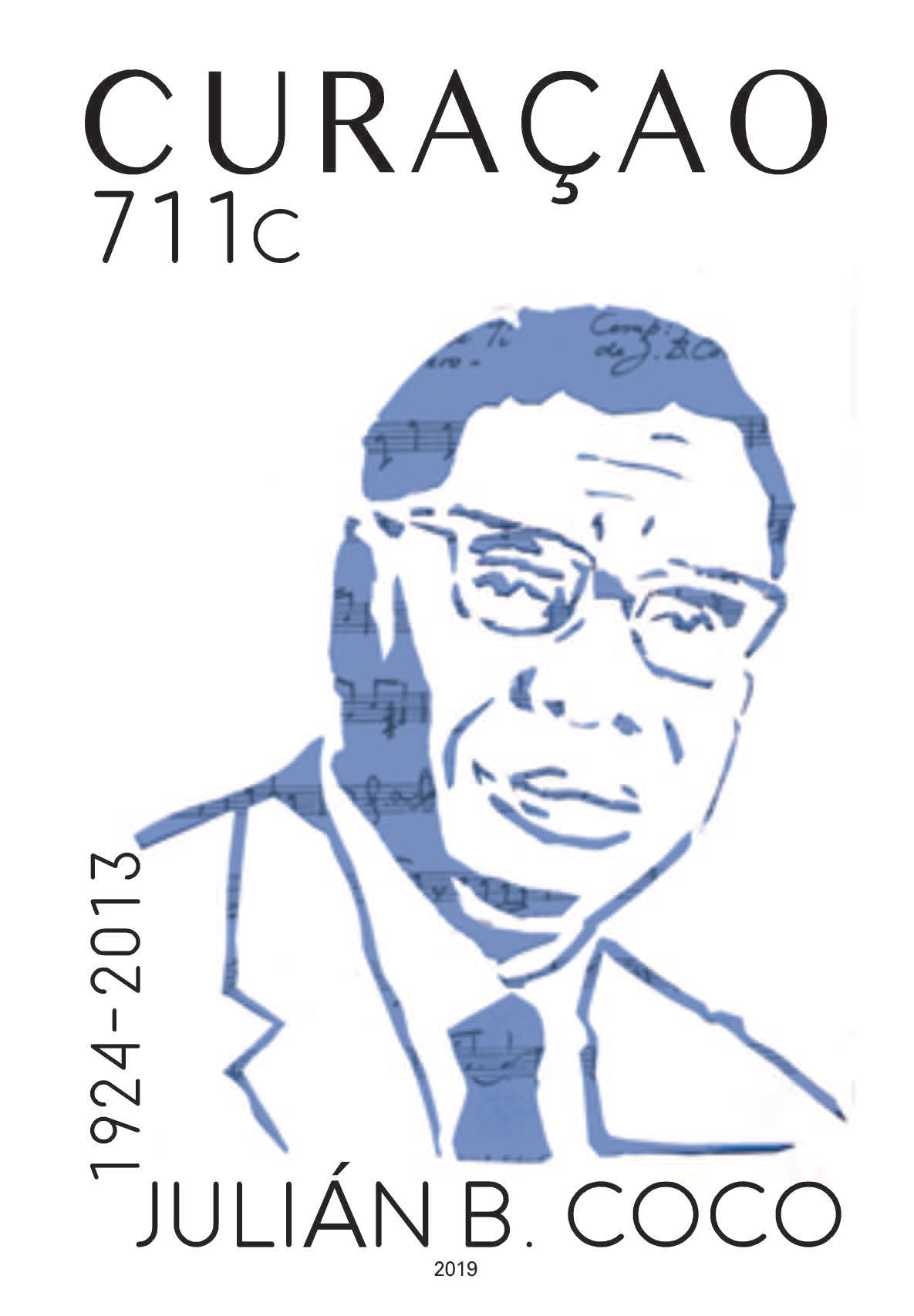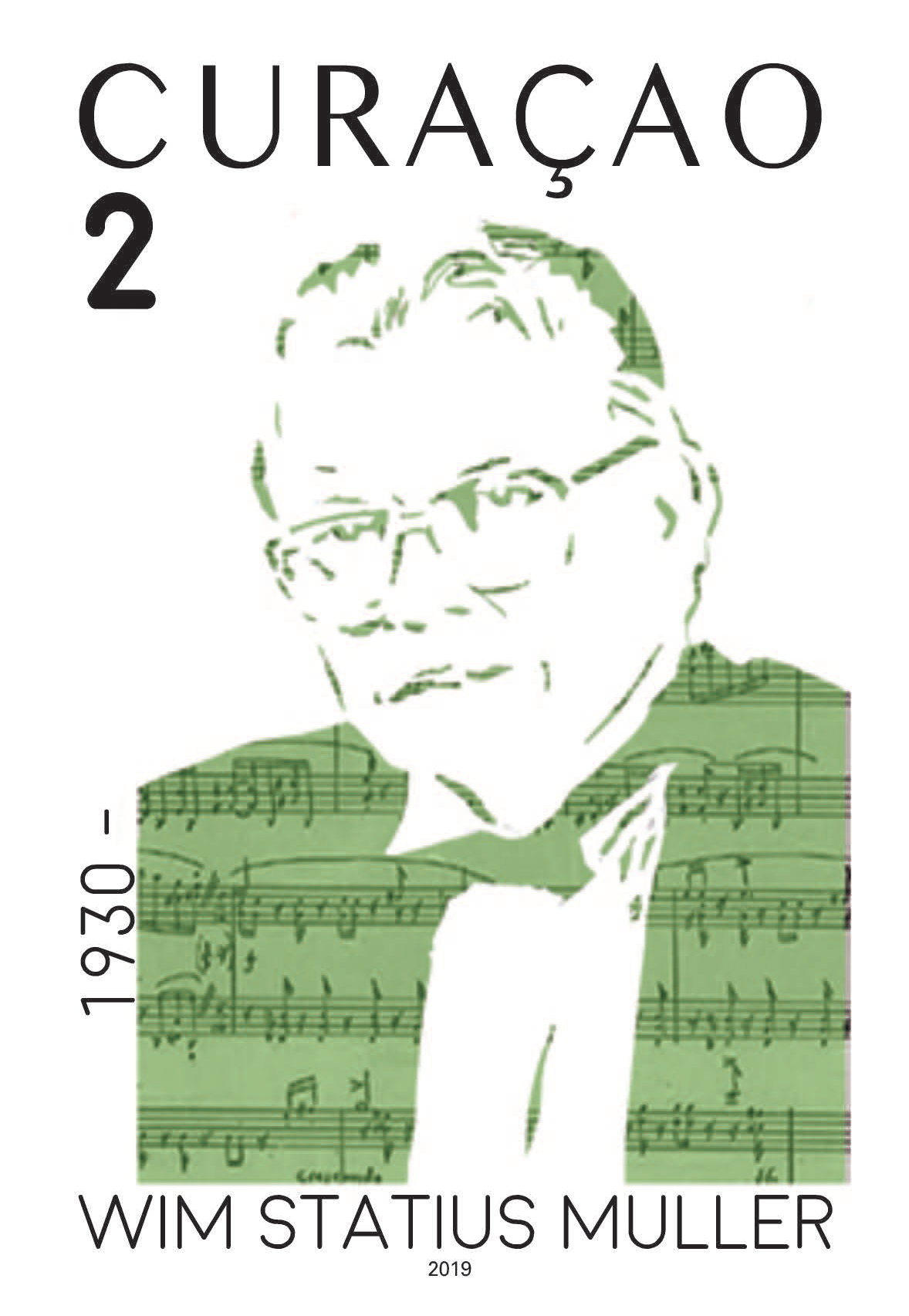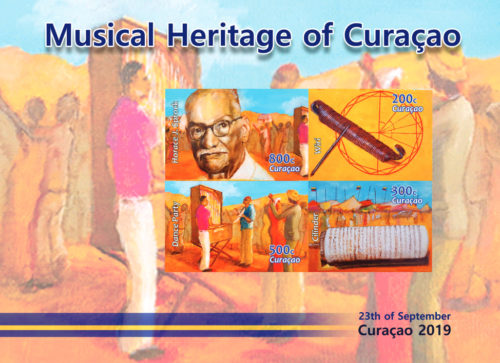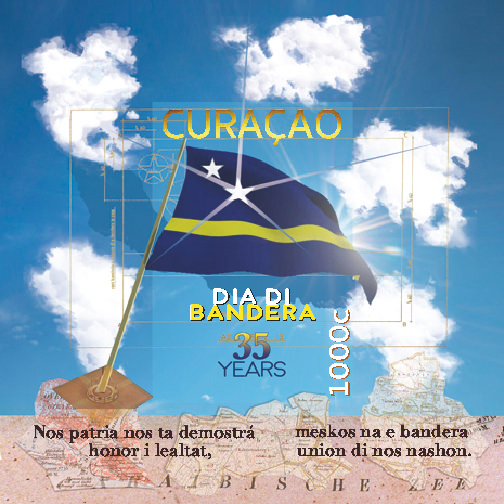Description
Janchi Boskaljon
Johannes Petrus Boskaljon (Born 17 april 1863 – Died 5 maart 1936, age 73)
Janchi Boskaljon was one of the composers of beautiful Mazurka, Antillean Polka, Danza and mars music, he had his own style. His peers were Dòdò Palm, Coco Palm, and Rufo Wever.
Shon Janchii Boskaljon was born on 17 April 1863 in Curaçao as the son of a non-musical father. He received his first music lessons from his uncle Frederik de Jongh. He first had flute lessons and then he also learned to play the tenor horn. He then lived (± 1900) at Ferdinandstraat 26, Otrobanda. At the age of 33 he became conductor of the military music corps on Curaçao. Shon Janchi spent all his spare time on the training of his musicians. Under his inspiring leadership, he brought this music corps to an unprecedented level for that time.
Shon Janchi was, like most Curaçao musicians of that time, a self-taught. Naturally gifted, he has developed himself musically to a height that commands admiration.
He learned to play all the instruments in his corps, which enabled him to write excellent arrangements for the corps. As a composer he has also written a lot of Curaçao dance music.
Shon Janchi Boskaljon and his music corps were indispensable on Curaçao at the beginning of this century.
Every Sunday evening and every Wednesday evening one could hear the military music corps on the Gouvernementsplein or one of the other squares in the city. On national holidays, Shon Janchi and his musicians worked from early in the morning until late at night to enhance the party.
Shon Janchi was present at all the feasts at the governmental house and at many private parties to give the party the necessary shine. Shon Janchi also gave performances with his military music corps in the Teatro Americano (where the Roxy theater was later).
It was also customary for the corps to welcome foreign warships with music at the entrance to the harbor.
Sjon Janchi Boskaljon died on 5 March 1936. In him Curaçao lost one of his most popular figures from that time.
At the funeral, the Harmony corps Sta. Cecilia is his conductor’s last honor. The orchestra played, among other things, the last work of the deceased n.l. the mourning march “Adiós a Sta. Cecilia” which he had studied with the Corps a couple of weeks before and was performed publicly on that day for the first time. (Source: Muziek en Musici van de Nederlandse Antillen)
Nicolaas ‘Shon Colá’ Susana
Nicolaas Obispu Susana (Born December 18, 1916 – Died April 20, 2003: aged 87)
Nicolaas Susana better known as Shon Colá, was born in Westpunt in a family of singers. His father was a kantadó di salve (a singer for burials, who sings in a broken Latin religious songs) and his mother was a tambú singer. He started as a singer in the band Melodium Boys. The band presented Cuban songs brought by the Curacaoan workers of the sugar cane fields in Cuba who had returned. He also sang in the church choir of Janwé for 25 years. Shon Colá debuted as a tambú singer on the first of September 1933 at Sabelita di Bartó, at Hanch’i Punda. After a while Shon Colá started his own group. With his music he questioned in a very sharp way events happening in the community of Curacao. He is one of the singers with outstanding voice and improvisation skills that Curacao has known. (source: pending)
The solo singer Colá was one of the first kantadó di tambú to record the tambú on the record with his group.
Here is a short description of the tambú of the past, as Shon Colá explains: “In the past, it was the women who sang the tambú, but only a few men did so.The tambú singers lived all over the island, but the best came from Punda. They started with the tambú in Zegu, where they started practicing from October for the tambu festivals that would take place around the turn of the year.
They used to say that the tambú-dance was a dance of the devil, but I never saw a devil when tambú was danced. Take, for example, the tambú as it used to be danced on Otrobanda. There was a lady there, they called her Chununu, who organized a tambú at her home, with doormen at the door. There the “decent” people went to the tambú: Jews, Protestants, all of them then danced the tambú, all dressed up in suit. (From these groups only the men went to the tambú). That was a tambú where not everyone could just go. The tambú season is around the turn of the year. About forty-five
years ago there was tambú on Awasá (Brionplein) on December 31st in the evening.
Nowadays various tambú records appear on the market at the end of the year and more and more tambú groups are emerging. Due to the incompetent changes that are interwoven, the original tambu is in danger of being ousted.” (source Muziek en Musici van de Nederlandse Antillen)
Clara Henriquez
Clara Blanche Henriquez (Born 1936 – Died January 1963: aged 27)
At Langestraat no. 58 in Otrobanda, the violinist shon Chacha Henriquez lived with his musical children: Charles, who played the flute, Clara (Blanche), who had a very beautiful soprano and also played the piano, as did her sisters Ligia and Beatrix. With shon Chacha at home during the Second World War days also a lot of music was played. Here his daughter Clara especially shone with her “golden” soprano voice, with which she later achieved great success in the various youth concerts that were given at the time.
One could often hear her in those days, while she read Nicola Vaccai’s “Metodo pnictico di canto per l ‘insegnamento del bel canto Italiano”.
The talented Clara with her beautiful soprano voice and her musical ambitions to continue studying, did not survive her father for long. He died on May 16, 1958. She died 5 years later, prematurely on 22 January 1963. (source Muziek en Musici van de Nederlandse Antillen)
Julián B. Coco
Julian Basilico Coco (born Januari 9, 1924 – died February 4, 2013, aged 89)
As a school-going boy, Julián was a musical boy who devoted his energy mainly to music. In a playful way he learned with the help of his friends to play the cuarta, mandolin andnthe guitar. For a talented idealist like Julián, this way of learning was far from satisfactory.
A small cause, however, made him ponder. We quote Julián’s own words: “One evening I felt very proud, sitting on a wall in Otrobanda playing the mandolin, when Jossy van der Linde, stupid drunk, waddling on his legs, asked me to hit the “mi”. I couldn’t, and when the drunken Jossy wanted to know how I dared to call myself a guitarist, while I was not able to do something simple, I was very pissed off. This incident made me understand that I needed more lessons “.
After being self-thought he followed a conventional written music course from New York and after having poled the local teachers and found it quite light, only one ideal remained for him: to study at the first Conservatory of the world: the Amsterdam Conservatory . That he finally ended up in Amsterdam, instead of Vienna, Paris or Madrid, was due to the peculiar study grant policy of our government. Julián has two types of friends on Curaçao, his musical friends with whom he has worked before he went to Holland, and the friends and admirers he received after he graduated as a bassist and guitarist.
Of course, the former friends are those who have known him more closely as a human being, philosopher, guitarist, bassist, arranger and composer. He could easily write music for the local conjuntos and often played along as a guitarist or contra-bassist. The man Julián was often a restless figure. He could, in a manner of speaking, ask someone for advice at the most impossible time of day. It often happened that on a Sunday morning he stepped in at six thirty to discuss some kind of music problem. (Back then people dared to sleep with unlocked doors in Curaçao.) At that time, Julián was one of the hardest workers on the island in the field of music. He was, as it were, possessed by the music. If you were lucky enough to play with him, you experienced the great driving force of his personality and you were dragged into his musical tirades that arose while playing.
As a friend he can not be matched. Every time he came to Curaçao, he looks up all his old music friends.
There was a time when he, as the best bass player, along with Henkel, who was the best cuartista, and Benny Privania, who was the best on the tambora, formed a trio to accompany the local pianists, Padu del Caribe, Rufo Wever and myself (Edgar Palm) when playing Antillean music.
In addition to his performance on Curaçao, Julián has performed abroad with great success, including for Dutch film and television, both as a soloist and with accompaniment from the orchestra. In 1973 he performed at the Rencontres Internationales de Musique in Vence together with, among others, the Dutch soloists Emmy Verhey (violin) and Daniel Wayenberg (piano). In a report about this, Julián is called the uncrowned king of that music event. On his walks through the town the whole international youth followed him and embraced him.
Julián has had contact with many world famous artists and played together with, among others, the violinist Jehudi Menuhin, the great Spanish guitarist Andrés Segovia and many from the jazz world such as trumpeters Stan Kenton and Dizzy Gillespie. He was double bass player with the Utrecht Symphony Orchestra. Before that he worked as a contrabassist with the Amsterdam Philharmonic Orchestra. He also gave private lessons at home.
Julián married Helena Blans in March 1956, an ex-violin student at the Amsterdam Conservatory. They had two sons and lived in Utrecht. (Source: Edgar Palm, Muziek en Musici van de Nederlandse Antillen)
Edgar Palm
Edgar Rudolf Roemer Palm (born February 8, 1905 – died January 12, 1998, aged 92)
Edgar Palm was born in 1905 as son of Rudolf Theodorus “Dòdò” Palm. He was a brother of Albert Palm and a godchild of Jacobo Palm. He married his cousin Frieda Mercedes Palm, a daughter of John Palm and Anna Maria Correa. Edgar died in 1998. He had a son Anthony Palm and two daughters. Anthony received piano lessons from his father as a child, later studied law in Nijmegen and became a notary in Curaçao.
Edgar was a pianist and organist. From the age of six, he received piano and organ lessons from his father, who after some time also had violin lessons from Willem Hellburg, according to the old tradition. At the age of eleven he sometimes replaced his father as organist at the Protestant church. At the age of 14 he accompanied various artists at the piano. In 1921 he left for the Netherlands with a government grant to attend secondary school and then study mechanical engineering. In 1929 he got a job at the Shell on Curaçao. He succeeded Albert Palm as organist of Israelite Church “Mikve Israël” (1932-1974) and also of the Dutch Reformed Israelite Church “Emanuel”. In 1968 he became organist of the masonic lodge “Igualdad” and in 1975 also of the lodge “Perseverance No. 184”.
He became best known for his efforts to preserve Antillean dance music and to flourish again in a period in which new influences threatened to choke the authentic music. He studied theory at the Hague Conservatory in 1949 and devoted himself to collecting, composing and interpreting Antillean music after his retirement from the Shell. In 1950 he formed the ensemble Edgar Palm y Trio that over the years has released 37 singles and 6 LP records with Antillean music. An LP released in 1982 he called “Otrobanda” as a tribute to the many prominent musicians (including all the Palms) who saw the light in this part of the city and especially his brother Albert Palm, who died too early, the composer of the “Otrobanda” waltz. He also has two publications to his name: “Music and dance”, in Cultural Mosaic of the Netherlands Antilles (1977) as well as “Music and musicians of the Netherlands Antilles” (1978), which is widely quoted in this story. Furthermore, he composed some fifty pieces, including not only waltzes but also tumbas and ballads. He last appeared in 1996 and appointed Norman Moron as his successor during the farewell concert. When he approached the third millennium, he composed the waltz ‘2000’ at a very old age, in which he virtually let go of the melody and accentuated the rhythm to indicate how the Antillean waltz would develop in the 21st century. For his performance in the field of music he was awarded the Cola Debrot in 1975, followed in later years by various awards, including some Venezuelan, but also appointments as Knight and Officer in the order of Oranje Nassau. (Source: Henk Beers.nl)
Wim Statius Muller
Wim Statius Muller (born January 26 1930- present Age:89)
Wim Statius Muller is a composer and pianist who has been nicknamed “Curaçao’s Chopin” for his romantic piano stylings. He also had a career in security and counterintelligence.
Statius Muller was also born in Otrabanda. He began piano lessons at age seven with Jacobo Palm, among others. He received a thorough musical education, entering in 1949 the Juilliard School of Music in New York City, where he studied piano and composition with Josef Raieff (the last pupil of Alexander Siloti).
He received his degree in 1954, and in 1955 began teaching piano and music history at Ohio State University in Columbus, Ohio. In 1960, Statius Muller left his position at the University to accept a job as a civil servant, initially in Willemstad, where he was asked to collaborate in the creation of a security service. In 1972, he relocated to the Netherlands, later describing this move as follows:
“This was in the days of the Cold War and I had been appointed to head a team of academics in the Dutch Counterintelligence Service that analyzed the policies of the various communist countries. Our job was to slip into the skin of the opponents’ ideologies and figure out their intentions.” He worked for a long time in a management position at the Domestic Security Service (“BVD”) in The Hague and then at NATO headquarters in Brussels.
After his retirement in 1995, he returned to Curaçao, where he had more time for the piano. Statius Muller performs regularly in the former Netherlands Antilles, and also occasionally in the Netherlands, the United States and Poland.
Statius Muller especially composed music for dancing, in settings for piano, not only waltzes and mazurkas, but also Caribbean dances such as the tumba derived originally from the Congo. Tropical, syncopated rhythms are clearly apparent in virtually all of his works. The works are, however, no longer intended to dance to, but are stylized and refined into concert music.
Many of his over 200 compositions are not published. A well-known published work is the Antillean Dances for piano (opus 2, 4, 5, 6). He performs many of his own compositions.
Documentary and awards
In 2013 a documentary about Statius Muller was created by filmmaker Alaric Alexander Smeets. The documentary is entitled Nostalgia:The Music of Wim Statius Muller, after a waltz which is one of Statius Muller’s most famous works.
In 2012 Statius Muller was awarded a Silver Carnation by Queen Beatrix for his contribution to the preservation of the musical heritage of the Caribbean Islands, in particular of the classical music of Curaçao. Statius Muller was also praised as a mentor and inspiration to young musicians in the Caribbean part of the Kingdom.
Statius Muller was invested as a Knight of the Order of Orange-Nassau. (Source: Wikipedia)
